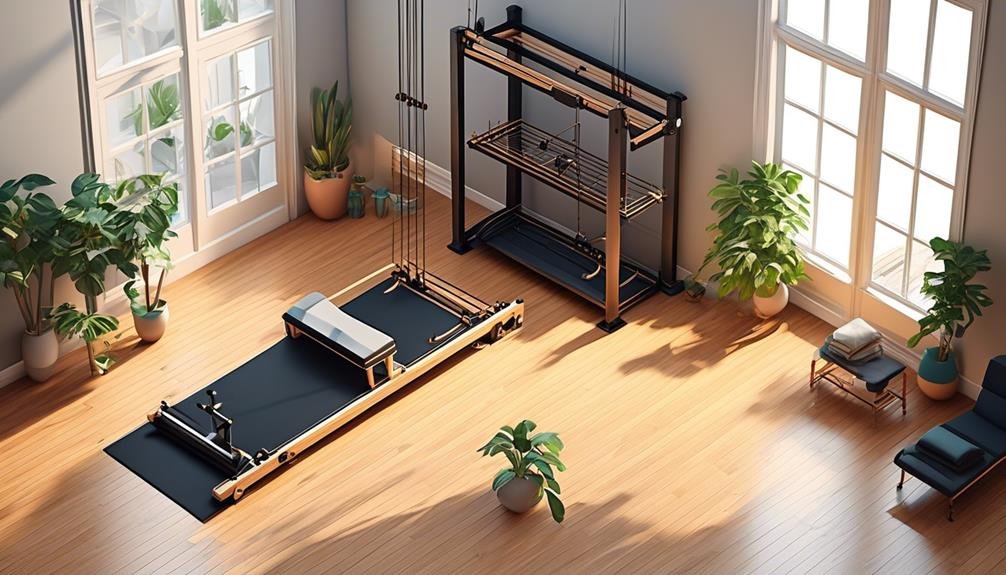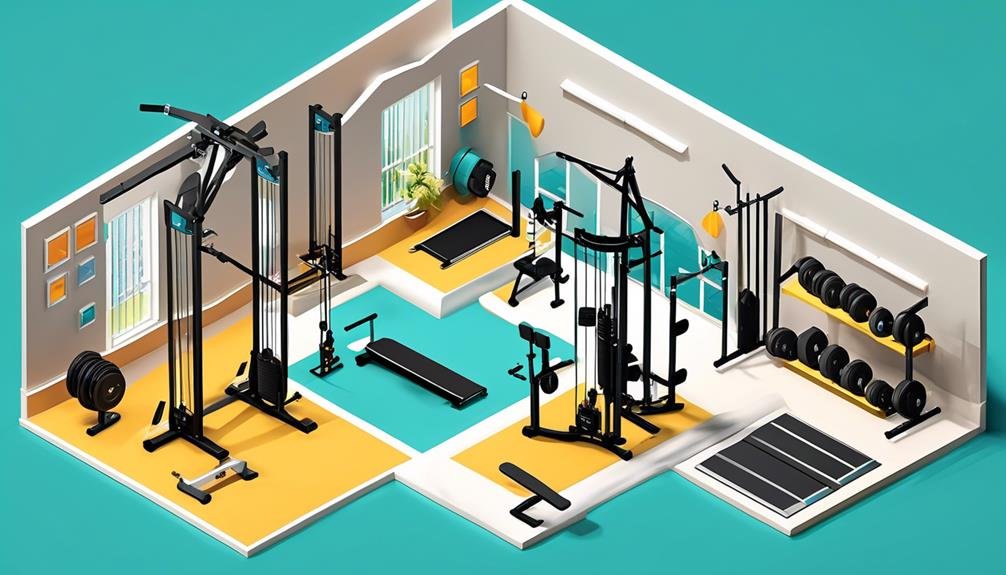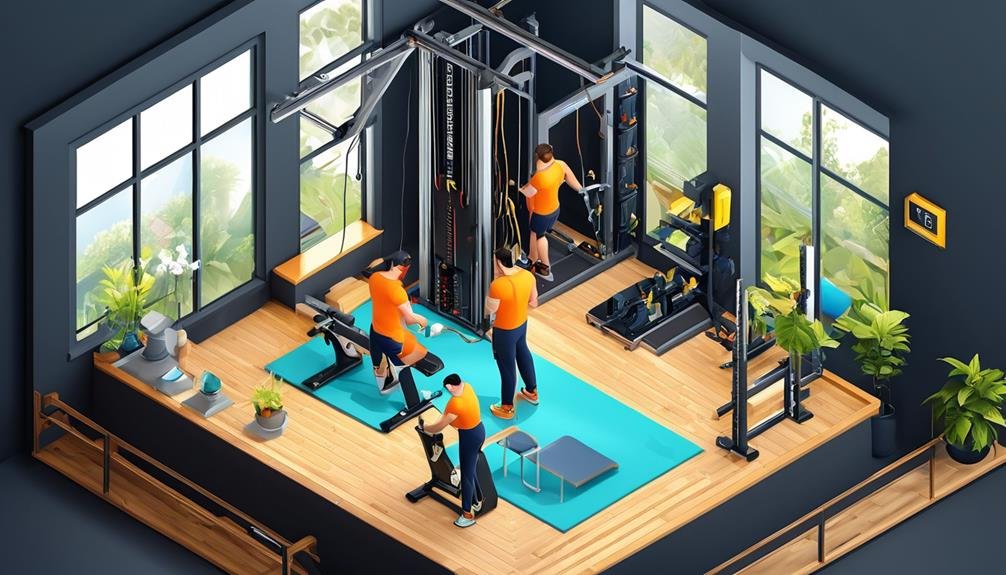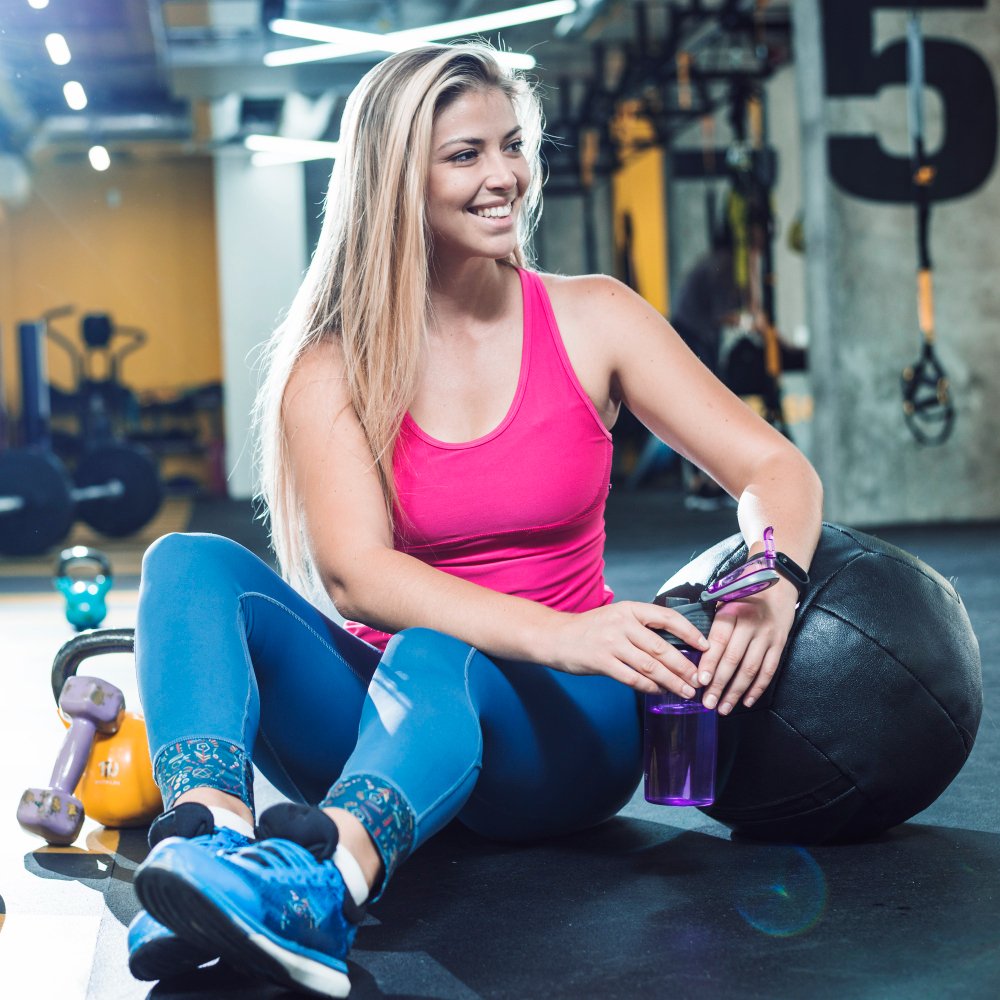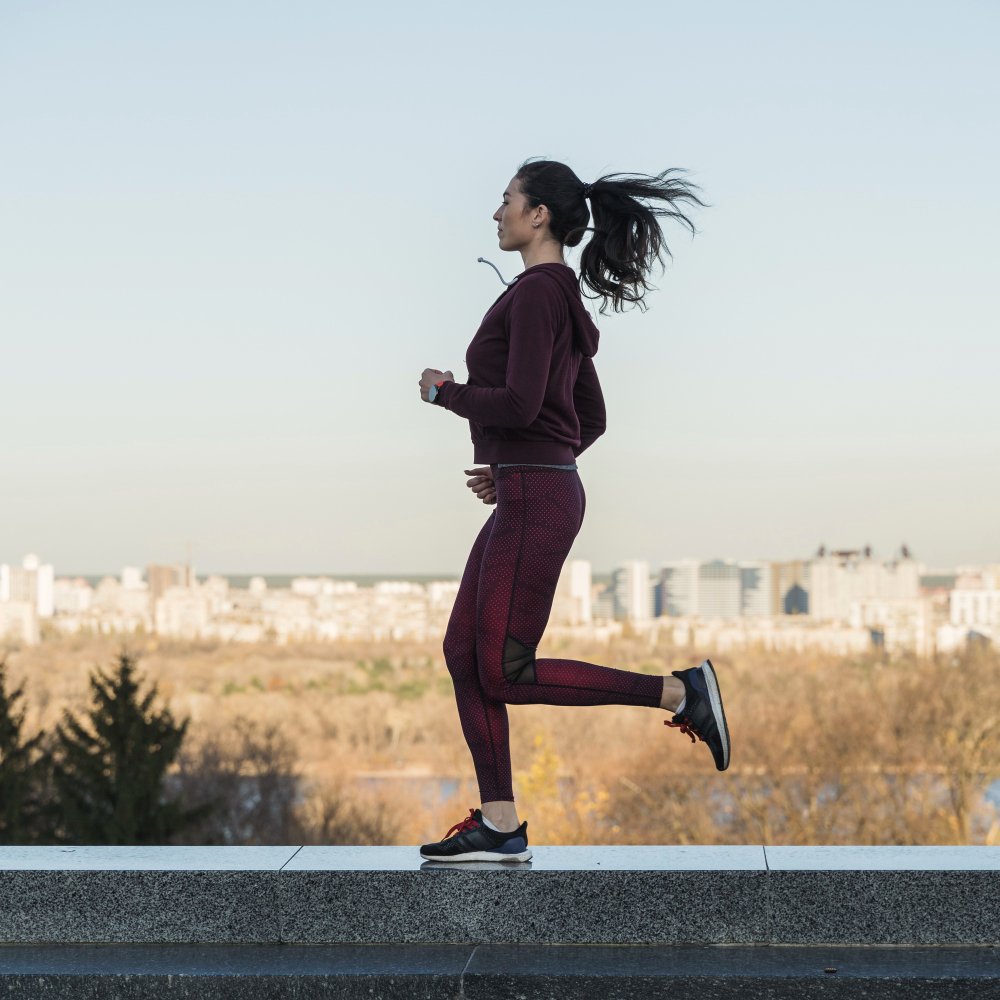Disclaimer: This content is for informational purposes only and does not replace professional medical advice, diagnosis, or treatment. Always consult a qualified healthcare provider before beginning any new exercise program.
Imagine yourself in a serene room, bathed in soft light, as you stretch and strengthen your body on a Pilates reformer.
But before you can fully immerse yourself in this peaceful scene, you need to figure out how much space you actually need for this equipment.
Don't worry, we've got you covered. In this discussion, we will explore the space requirements for a Pilates reformer and other specialty equipment, as well as provide you with some tips and alternative options for those with limited space.
So, let's get started and create the perfect workout space for you.
Key Takeaways
- Allocate a space that is at least 8 feet long and 4 feet wide for a Pilates Reformer.
- Ensure enough clearance around the Reformer for proper movement.
- Consider a minimum ceiling height of 9 feet to accommodate the Reformer.
- Additional space around the Reformer is needed for movement and safety.
Pilates Reformer Space Requirements
To accommodate a Pilates Reformer or other specialty equipment, you'll need an adequate amount of space in your workout area. The dimensions of the space required for a Pilates Reformer can vary depending on the specific model and brand you choose. However, as a general guideline, you should allocate a space that's at least 8 feet long and 4 feet wide. This will allow you to fully extend your body and perform the various exercises comfortably.
Additionally, you should ensure that there's enough clearance around the Reformer to allow for proper movement and positioning during the exercises.
It is also important to consider the height of the space. The ceiling should be high enough to accommodate the Reformer, which typically stands at around 2 feet in height. A minimum ceiling height of 9 feet should be sufficient to prevent any restrictions during exercise.
In addition to the space required for the Reformer itself, you should also allow for space around the equipment for ease of movement and for any additional accessories or props that you may use during your Pilates workouts. It's recommended to have an overall workout area of at least 10 feet by 10 feet to provide ample space for a comfortable and effective Pilates routine.
Specialty Equipment Space Considerations
When considering the space needed for specialty equipment in your Pilates workout area, it's important to take into account the dimensions and clearance requirements of each specific piece. Here are some key considerations to keep in mind:
- Dimensions: Measure the length, width, and height of the equipment to ensure that it will fit comfortably in your designated space. Consider not only the size of the equipment itself but also the space required for movement around it.
- Clearance requirements: Some specialty equipment, such as the Cadillac or the Chair, may require additional space for proper usage. Make sure to check the manufacturer's guidelines for any specific clearance requirements to avoid any potential safety hazards.
- Flooring: Consider the type of flooring in your Pilates area. Equipment like the reformer may require a stable and non-slip surface to ensure safe and effective workouts. Additionally, some equipment may require a mat or padding to protect the floor from damage.
- Storage: Don't forget to allocate space for storing your specialty equipment when it's not in use. This can help keep your workout area organized and free from clutter.
Minimum Space Recommendations
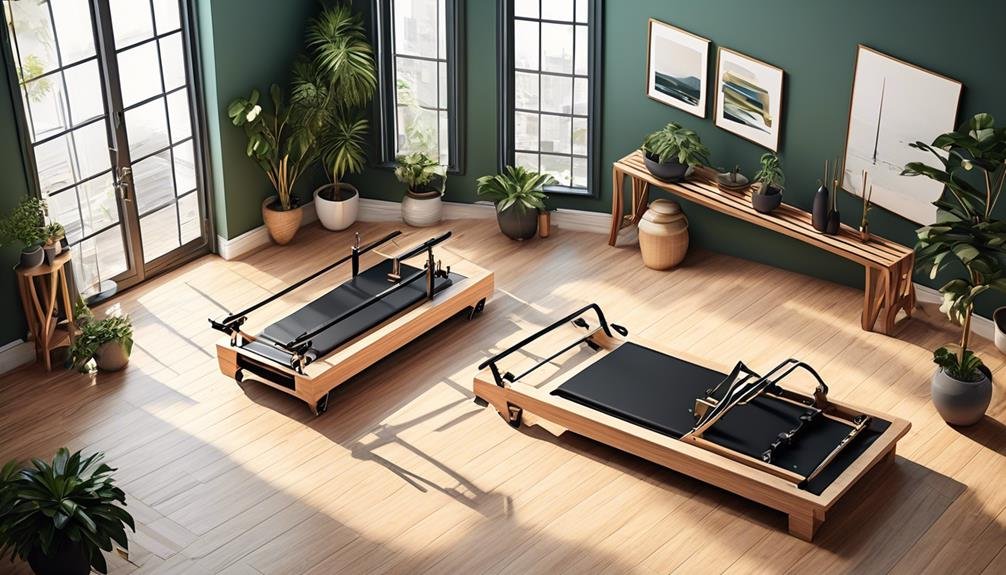
Ensure that you have adequate space available for optimal use of your Pilates specialty equipment. While the amount of space you need may vary depending on the specific equipment and exercises you plan to perform, there are some general minimum space requirements to consider.
For a Pilates Reformer, a minimum space of 8 feet in length by 4 feet in width is recommended. This allows for the full range of motion and movement required for various exercises. Additionally, you'll need some extra space around the Reformer for ease of movement and safety.
If you're planning to use other specialty equipment such as the Cadillac or the Wunda Chair, you should allocate additional space accordingly. The Cadillac typically requires a minimum space of 8 feet in height by 6 feet in width, while the Wunda Chair requires a minimum space of 4 feet by 3 feet.
It is important to note that these are minimum space recommendations and having additional space can greatly enhance your Pilates experience. More space allows for greater freedom of movement and reduces the risk of accidents or injuries.
Ideal Room Size for Pilates Reformer
For optimal use of your Pilates Reformer, it's important to consider the ideal room size. The size of the room can greatly impact your ability to perform exercises comfortably and safely. Here are some key factors to consider when determining the ideal room size for your Pilates Reformer:
- Space for the Reformer: Make sure you have enough space to fully extend the Pilates Reformer, including the carriage and footbar. This will allow you to perform a wide range of exercises without feeling confined or restricted.
- Clearance around the Reformer: It's essential to have enough clearance around the Pilates Reformer to move freely and safely. Aim for at least 2 feet of space on all sides to avoid any potential accidents or injuries.
- Additional Equipment: If you plan on using other Pilates equipment, such as a Cadillac or a Wunda Chair, make sure to account for their size and clearance requirements when determining the ideal room size.
- Ceiling Height: Consider the height of the room as well. Ideally, you should have a ceiling height of at least 8 feet to accommodate exercises that involve standing or using equipment that requires overhead clearance.
Space-Saving Tips for Home Gyms
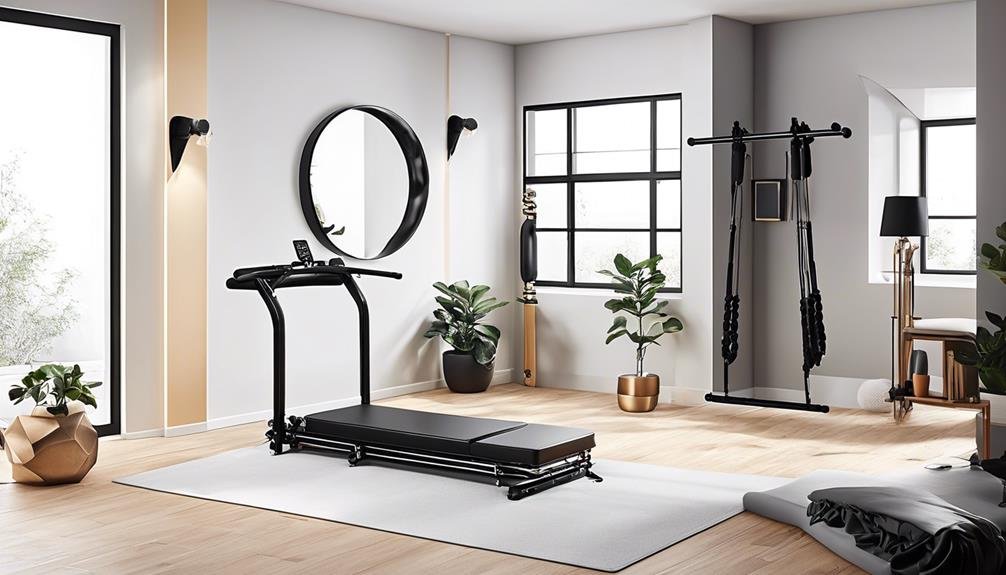
To optimize the space in your home gym without compromising the functionality of your Pilates Reformer, consider implementing these space-saving tips.
First, choose a folding or portable Pilates Reformer that can be easily stored when not in use. This allows you to free up valuable floor space and utilize the area for other exercises or equipment.
Additionally, invest in adjustable or multi-purpose equipment that can serve multiple functions. For example, a Pilates chair with removable handles can be used for both Pilates exercises and as a regular chair. This versatility saves space and eliminates the need for separate pieces of equipment.
Another space-saving tip is to utilize wall-mounted equipment. Wall-mounted suspension trainers, pull-up bars, or shelves can be easily installed and take up minimal space, while still providing a variety of exercise options.
Furthermore, consider using resistance bands instead of bulky weights. Not only are resistance bands compact and lightweight, but they also offer a challenging workout that targets multiple muscle groups.
Lastly, make use of vertical space by installing hooks or racks on the wall to hang exercise mats, resistance bands, or other accessories.
Alternative Options for Limited Space
Consider compact Pilates equipment options that are specifically designed for limited space.
When you have limited space but still want to enjoy the benefits of Pilates, there are alternatives available that can fit into smaller areas without compromising on functionality. Here are some options to consider:
- Portable Pilates Bar: This lightweight and compact piece of equipment allows you to perform a variety of Pilates exercises without taking up much space. It consists of a metal bar with resistance bands attached to provide resistance during your workouts. The portable Pilates bar can be easily stored away when not in use, making it ideal for small spaces.
- Pilates Ring: Also known as a magic circle, the Pilates ring is a versatile and compact piece of equipment that can be used for a wide range of exercises. It provides resistance and helps to engage your core muscles while performing various Pilates movements. The Pilates ring is small in size, making it perfect for limited space.
These alternative options offer a convenient solution for those with limited space who still want to enjoy the benefits of Pilates. By choosing compact equipment specifically designed for smaller areas, you can create a Pilates workout space that fits your needs without sacrificing functionality.
Importance of Proper Spacing for Safety
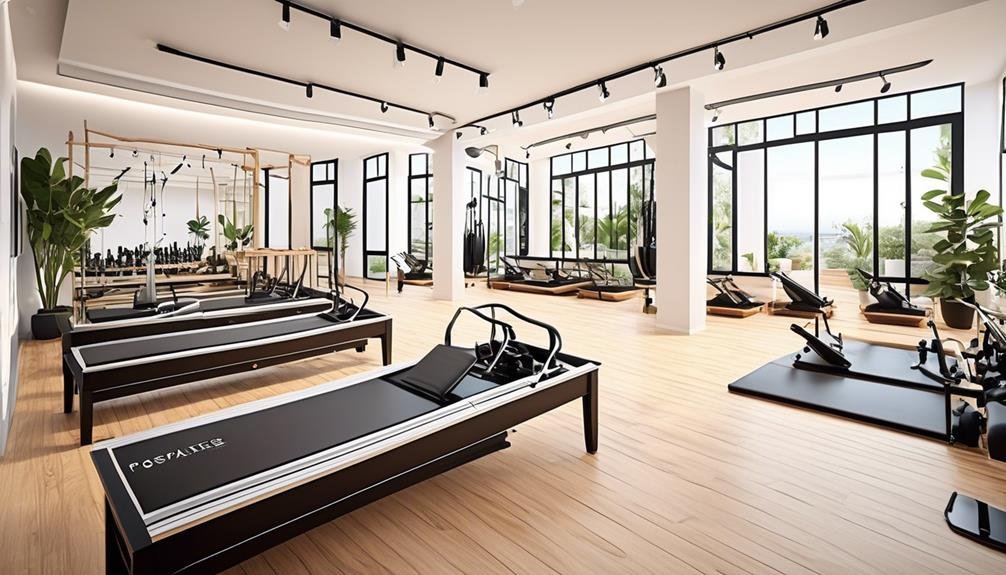
Proper spacing is crucial for ensuring safety during Pilates workouts. When it comes to using a Pilates reformer or other specialty equipment, having enough space around you is essential to avoid accidents and injuries. Without adequate space, you may not be able to perform the exercises properly, compromising your form and increasing the risk of strains or sprains.
The recommended amount of space needed for a Pilates reformer is approximately 8 feet long by 4 feet wide. This allows for the full range of motion required for various exercises, such as leg presses and footwork. Additionally, you should have enough overhead clearance to perform exercises that involve your arms, ensuring that you don't hit anything above you.
Having enough space around the reformer is also important for your safety. This includes ensuring that there are no obstacles or tripping hazards nearby. It's crucial to have a clear and unobstructed area where you can move freely without any distractions or potential dangers.
Furthermore, having proper spacing between different pieces of equipment is essential in a Pilates studio or gym setting. This ensures that clients can move safely between machines without the risk of collisions or accidents. It also allows instructors to observe and provide guidance to clients without any obstructions.
Designing a Functional Workout Space
When designing a functional workout space, it's important to carefully consider the layout and arrangement of equipment to optimize efficiency and safety. Here are some key factors to keep in mind:
- Equipment Placement:
- Position the equipment strategically to allow for easy accessibility and flow between exercises.
- Consider the size and shape of the equipment when determining the spacing between each piece.
- Traffic Flow:
- Ensure there's enough space for clients to move comfortably around the workout area without any obstructions.
- Avoid placing equipment too close together, as this can create cramped and potentially unsafe conditions.
- Safety Considerations:
- Leave ample space around equipment to prevent accidents and injuries.
- Ensure that there's enough clearance for clients to perform exercises without any restrictions or hazards.
- Storage Solutions:
- Incorporate storage options, such as shelves or cabinets, to keep equipment organized and easily accessible.
- Consider the space needed for accessories and smaller items, such as resistance bands or weights.
Frequently Asked Questions
Can I Use My Pilates Reformer in a Small Apartment or Limited Space?
You can use a Pilates reformer in a small apartment or limited space. The equipment is designed to be compact and can fit in tight areas. Just make sure there is enough space around it for movement.
Can I Store My Pilates Reformer Vertically to Save Space?
Yes, you can store your Pilates reformer vertically to save space. This is a great option if you have limited space in your apartment or home gym. It allows you to easily tuck it away when not in use.
What Are Some Alternative Options for Pilates Equipment in a Small Space?
To maximize your small space, consider using alternative options for pilates equipment like resistance bands, exercise balls, or small portable reformers. These options provide a similar workout experience while requiring less space.
How Much Clearance Is Needed Around the Pilates Reformer for Safe and Effective Use?
To use the Pilates Reformer safely and effectively, you need enough clearance around it. The amount of space required depends on the specific model, but generally, you should have about 2-3 feet on each side and 4-5 feet at the front and back.
Are There Any Safety Considerations When Using Specialty Equipment in a Small Space?
In a small space, safety considerations for using specialty equipment include ensuring adequate clearance for movement, securing equipment to prevent tipping, and placing mats or padding to protect against falls or impact.
Conclusion
In conclusion, when considering the space requirements for a Pilates reformer or other specialty equipment, it's important to prioritize safety and functionality.
While the minimum space recommendations vary, an ideal room size for a Pilates reformer is around 10 feet by 20 feet. However, if space is limited, there are alternative options and space-saving tips available.
Proper spacing is crucial for a safe and effective workout, so it's essential to design a functional workout space that suits your needs.
